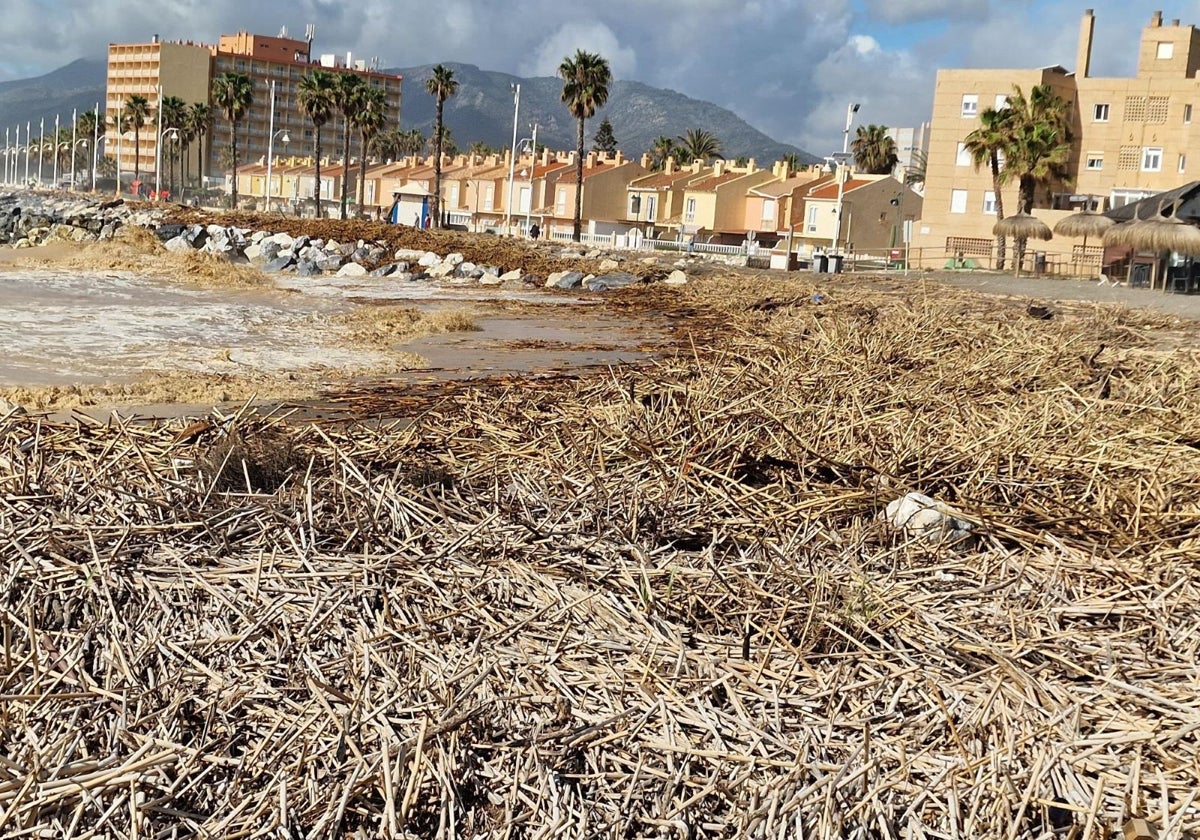Invasive reeds clog Malaga watercourses and reservoirs and cause damage to Costa del Sol's beaches
The regional government and environmentalists are studying various measures to combat the species, which threatens river ecosystems in the province
The succession of heavy rains in Malaga and along the Costa del Sol this March has brought to light the environmental problem caused by the invasion of the reed cane plant. This exotic species has colonised riverbanks and streams across the province, leading to loss of biodiversity and damage to beaches when it is washed up during storms. Andalucía's regional government, in collaboration with environmentalists, is now looking for a solution.
Reeds are a species that is easily dislodged during floods, leading to blockages along riverbeds and in reservoirs, as has happened during the latest series of storms in the Casasola and El Limonero dams. In addition, when washed up on the numerous beaches along the coast, the waste causes damage estimated in the millions of euros, which the local councils have to fork out in order to recover the state of the beaches.
This, together with the increasing population of other invasive species such as the algae, is one of the environmental problems caused by global warming and a topic for discussion at the Andalusian conference of environmental sciences, which is being staged at the Palacio de Ferias in Malaga.
"We have to come up with solutions that will allow us to remove these exotic plants, without welcoming the proliferation of other invasive species. It is an issue that worries environmental science professionals a lot and there are many colleagues working on this issue, but it is not easy," said Rosario Vargas, president of the environmental college (Coamba).
Characteristics of the reed cane
Enrique Salvo, director of the University of Malaga's climate change board, and his team have been studying the reed cane issue in depth (Arundo donax). As they have described it, it is a species that comes from the eastern Mediterranean and is proliferating more and more. "It is now distributed practically all over the world. Here, it has been progressing for the past 40 years, mostly along rivers and streams," said Salvo.
As Salvo explained, reeds appear when people, through agriculture or other means, remove vegetation from the banks of streams, which leaves a gap. These gaps are quickly filled by easily spreading and buoyant plants like the reed. As a result, this species displaces native vegetation, such as oleander, tamarisk and white poplar.
In addition, it is highly competitive and expels everything around it. "The inflorescence, the plumes or feathery structures at the top, release an allelopathic substance that specifically prevents the germination of other seeds around it, thereby ensuring its colonisation."
Ways to eradicate it
Given all of these characteristics, it is not exactly an easy pest to eradicate, because it spreads very quickly and extensively. Enrique Salvo has proposed eliminating it and, at the same time, immediately restoring the banks with local species. According to him, the process should be one of almost manual elimination, with quick replacement.
Salvo also highlighted the importance of creating breakwaters with the native plants typical of this type of ecosystem, starting with the highest areas of the riverbed and working downwards.
At the same time, the regional government is studying possible commercial uses of the reeds, although with little success so far.

